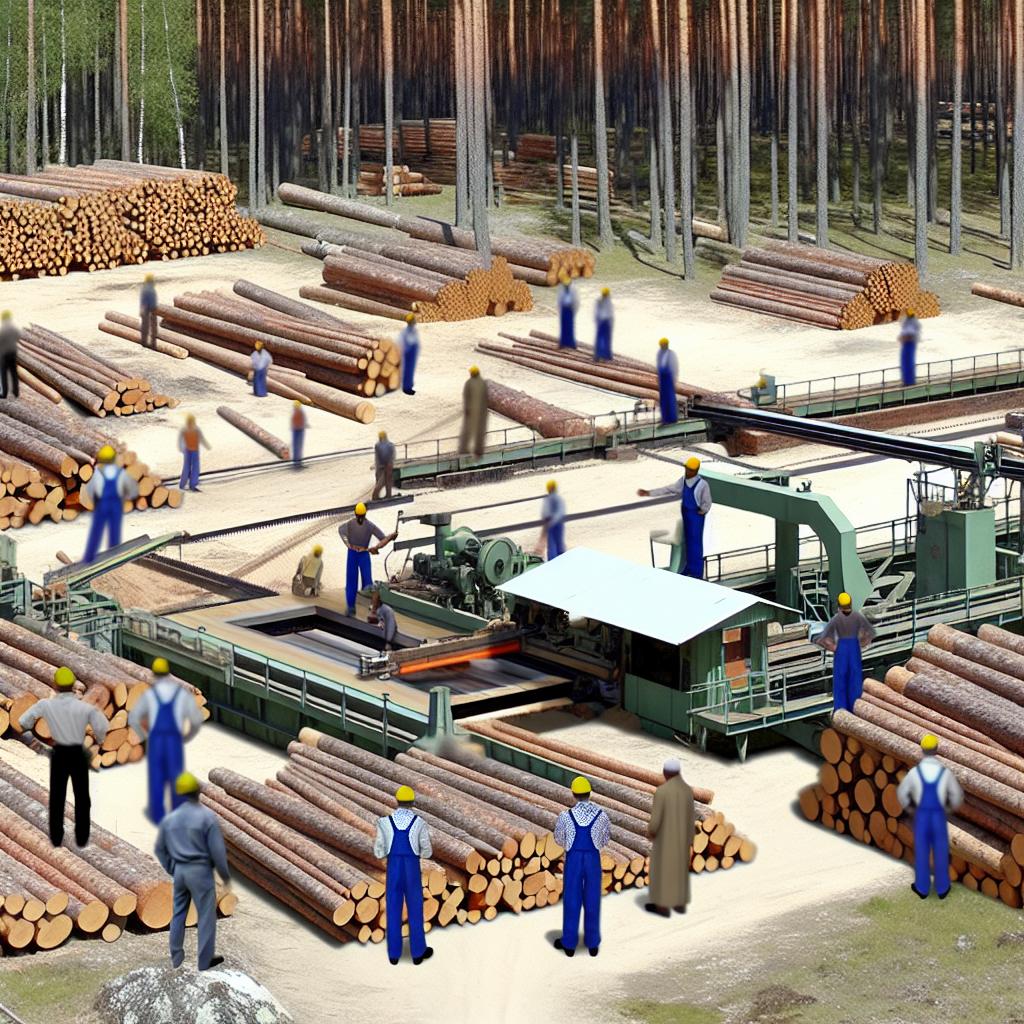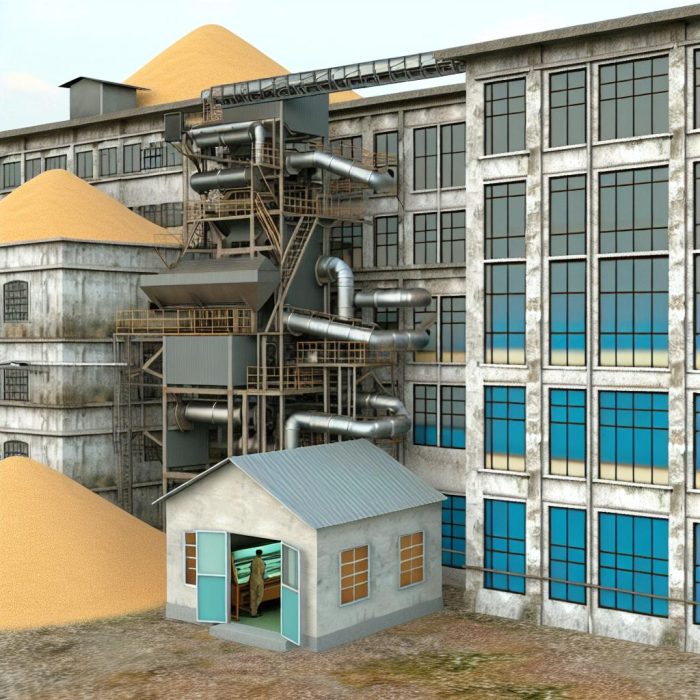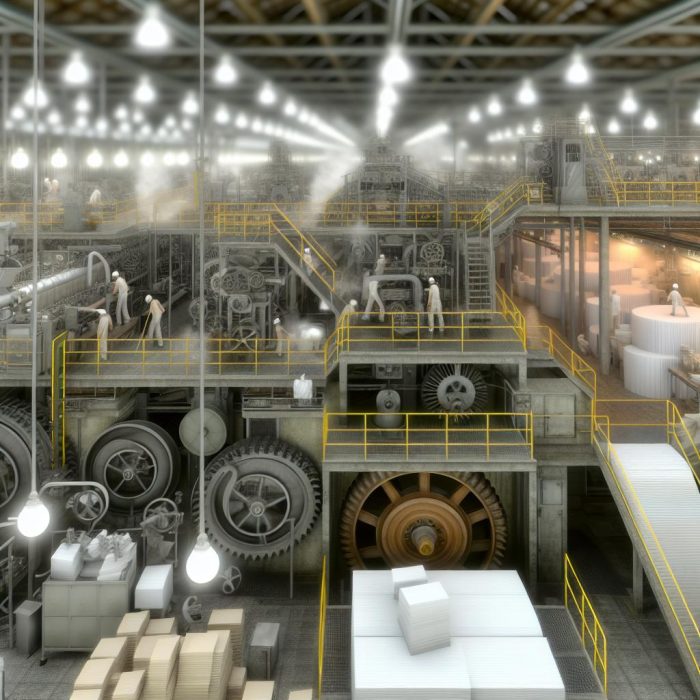History of Saw Mills
The concept of saw mills has a history stretching back over centuries. Initially, the idea germinated around the 3rd century AD, with early records showing examples within Roman territories. Back then, the saw mills primarily relied on water power, an innovative step that introduced a consistent and efficient method to produce wood planks and beams. This development was groundbreaking for construction and woodworking industries, offering a new level of standardization and efficiency that was previously unavailable.
Development Over the Centuries
The evolution of saw mill technology is a testament to human ingenuity and adaptation over centuries. Initially, saws were simply manually operated tools. As time progressed, innovation led to the introduction of water-powered saws. This transition marked a shift from mere manual labor to harnessing natural forces for more significant productivity.
In the 19th century, steam power emerged as a game-changer. Steam-powered machinery was not just revolutionary for saw mills but also a landmark advancement in industrial history. This era of innovation paved the way for the mechanization of many processes, including saw milling.
Today, most modern saw mills are powered by electricity. They are often equipped with automated precision cutting technologies, ensuring high efficiency and a substantial reduction in waste. This technological evolution signifies a consistent progression towards optimization and sustainability in saw milling.
Types of Saw Mills
Saw mills are diverse, designed to cater to different needs and applications within the forestry and woodworking industries. While there are several types, two primary forms include portable and stationary saw mills:
Portable Saw Mills: Known for their versatility, portable saw mills are smaller units that can be easily transported. Their mobility is advantageous for on-site processing, particularly beneficial for small-scale logging operations and hobbyists. Such saw mills allow users to process timber directly at logging sites, reducing the need for transporting logs to stationary facilities.
Stationary Saw Mills: Unlike their portable counterparts, stationary saw mills are permanent installations, often found within larger commercial operations. These mills are capable of processing large volumes of timber, making them essential for significant industrial activity. Their structure is designed to handle the heavy-duty and continuous processing required by large-scale operations.
The Role of Technology
Technological advancements have profoundly impacted the functioning of modern saw mills. One of the most significant technological contributions is the incorporation of computer numerical control (CNC) systems and laser-guided cutting technologies. These advancements allow saw mills to enhance precision substantially, minimize waste, and improve overall efficiency.
The benefits of such technology extend beyond mere productivity. By reducing errors and refining the cutting process, CNC and laser technologies also reduce material waste, conserving resources. Additionally, automation plays a crucial role in managing labor costs. It also reduces direct human involvement in dangerous operations, significantly improving safety standards within saw mills.
Environmental Considerations
As the world becomes increasingly environmentally conscious, the impact of industrial operations, including saw mills, is under scrutiny. Modern saw mills are aware of the importance of reducing their ecological footprint and are actively incorporating innovations to align with sustainable practices.
One of the critical areas where saw mills are changing their approach is waste management. Advanced waste recycling processes have been developed, allowing byproducts like sawdust to be reused rather than discarded. These byproducts can be instrumental in producing other materials such as particleboard. Furthermore, sawdust and other residues are increasingly used in generating bioenergy, providing a renewable energy source while also managing waste efficiently.
For individuals interested in further exploring technological advancements and industry trends within saw mills, the Woodworking Network serves as a valuable resource, continually providing updates on the latest developments in the field.
In conclusion, the history of saw mills is marked by a continuous journey of advancement and adaptation. From their water-powered origins in ancient Rome to the modern electrically powered facilities with advanced automation and precision technology, saw mills have evolved dramatically. This evolution highlights not only a commitment to efficiency and productivity but also a growing acknowledgment of the environmental responsibilities that come with industrial progress.
Understanding the types and technology underpinning saw mills provides insight into their critical role in the woodworking industry. As technology continues to advance, it is expected that saw mills will further optimize their operations, aligning closely with sustainable practices and contributing positively to both industrial and natural ecosystems.



